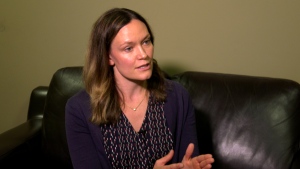Radiologists in Quebec are urging the provincial government to increase access to 3D mammograms in order to improve breast cancer detection rates. According to a recent report by CTV News, radiologists are calling on the government to expand the use of this advanced technology in breast cancer screening.
Currently, 3D mammograms, also known as digital breast tomosynthesis, are only available in a limited number of hospitals and clinics in Quebec. This means that many women do not have access to this potentially life-saving screening method.
Dr. Jean Seely, a radiologist at The Ottawa Hospital and a professor at the University of Ottawa, explains that 3D mammograms provide a more detailed and accurate view of breast tissue compared to traditional 2D mammograms. This can lead to earlier detection of breast cancer, which is crucial for successful treatment.
In addition, 3D mammograms have been shown to reduce the number of false positives, which can cause unnecessary stress and anxiety for patients. This is because the technology allows radiologists to view the breast tissue in layers, making it easier to distinguish between normal and abnormal tissue.
Despite the clear benefits of 3D mammograms, the technology is not widely available in Quebec. This is due to the high cost of the machines and the lack of funding from the government. As a result, many women are forced to travel to other provinces or pay out of pocket for this screening method.
Dr. Seely and other radiologists are calling on the Quebec government to invest in 3D mammography and make it accessible to all women in the province. They argue that the initial cost of the machines will be offset by the long-term savings from early detection and reduced false positives.
In response to these calls, the Quebec Ministry of Health and Social Services has stated that they are currently reviewing the use of 3D mammograms and will make a decision in the near future.
In the meantime, radiologists are urging women to be proactive about their breast health and to discuss the option of 3D mammograms with their healthcare providers. They also emphasize the importance of regular breast cancer screenings, regardless of the technology used.
In conclusion, radiologists in Quebec are advocating for the expansion of 3D mammograms in order to improve breast cancer detection rates and reduce false positives. It is now up to the government to make this advanced technology accessible to all women in the province.




